Making Chocolate in the Amazon
Jordi | May 11, 2023, 3:44 a.m. | Ecuador
Today we are in Tena, at the edge of the Amazon, where the fingers of the Andes reach out. The Napo river runs by, one of the whitewater tributaries of the Amazon that carries nutrient rich sediments from the mountains through the rainforests.
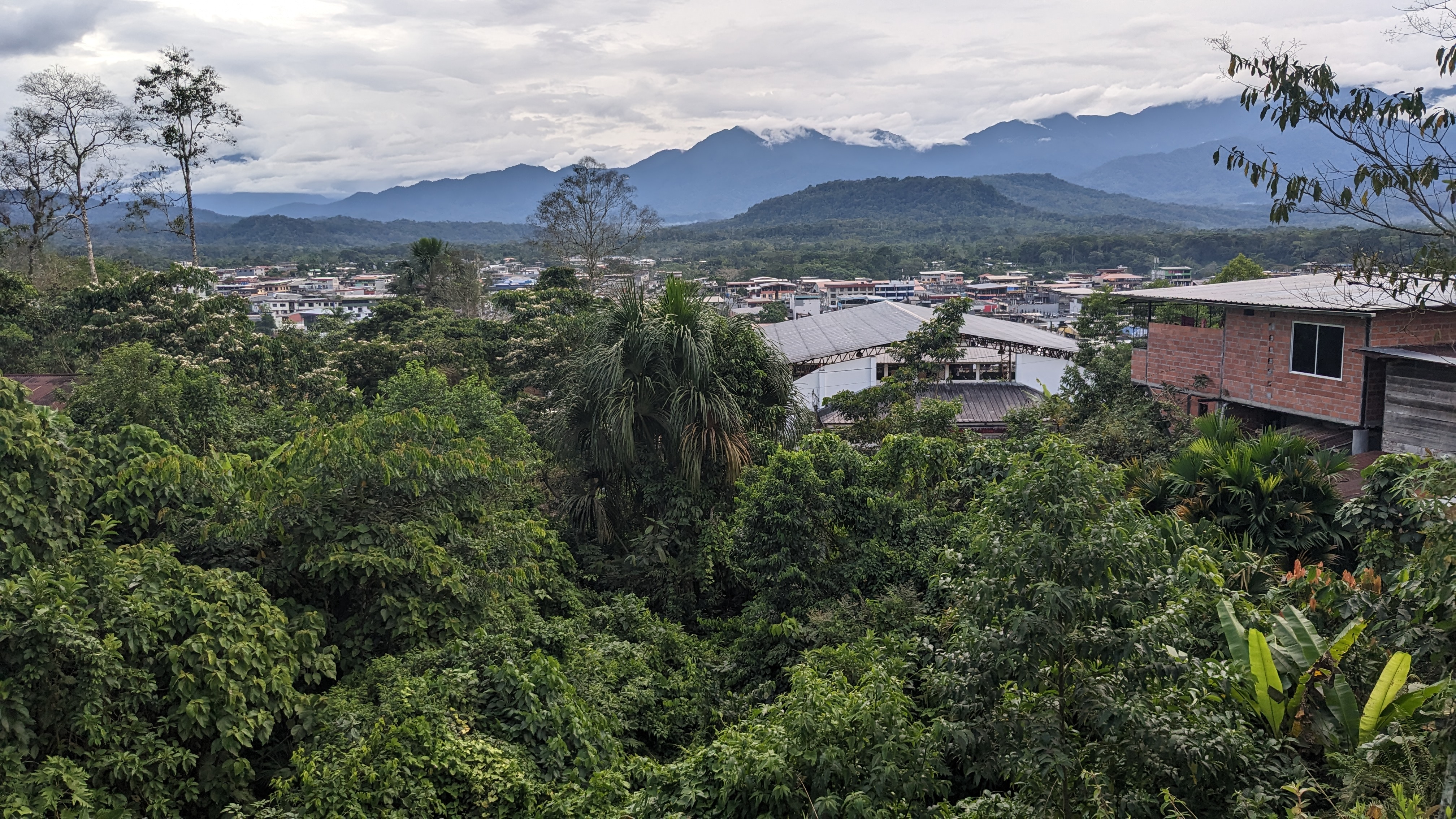
One of the best things we did in Tena was to go up the river to a local community that grows cacao and makes chocolate. Cacao (or cocoa) is actually a fruit seed (thus called cacao beans). And the fruit grows from small flowers that sprout directly from the trunks of the trees.
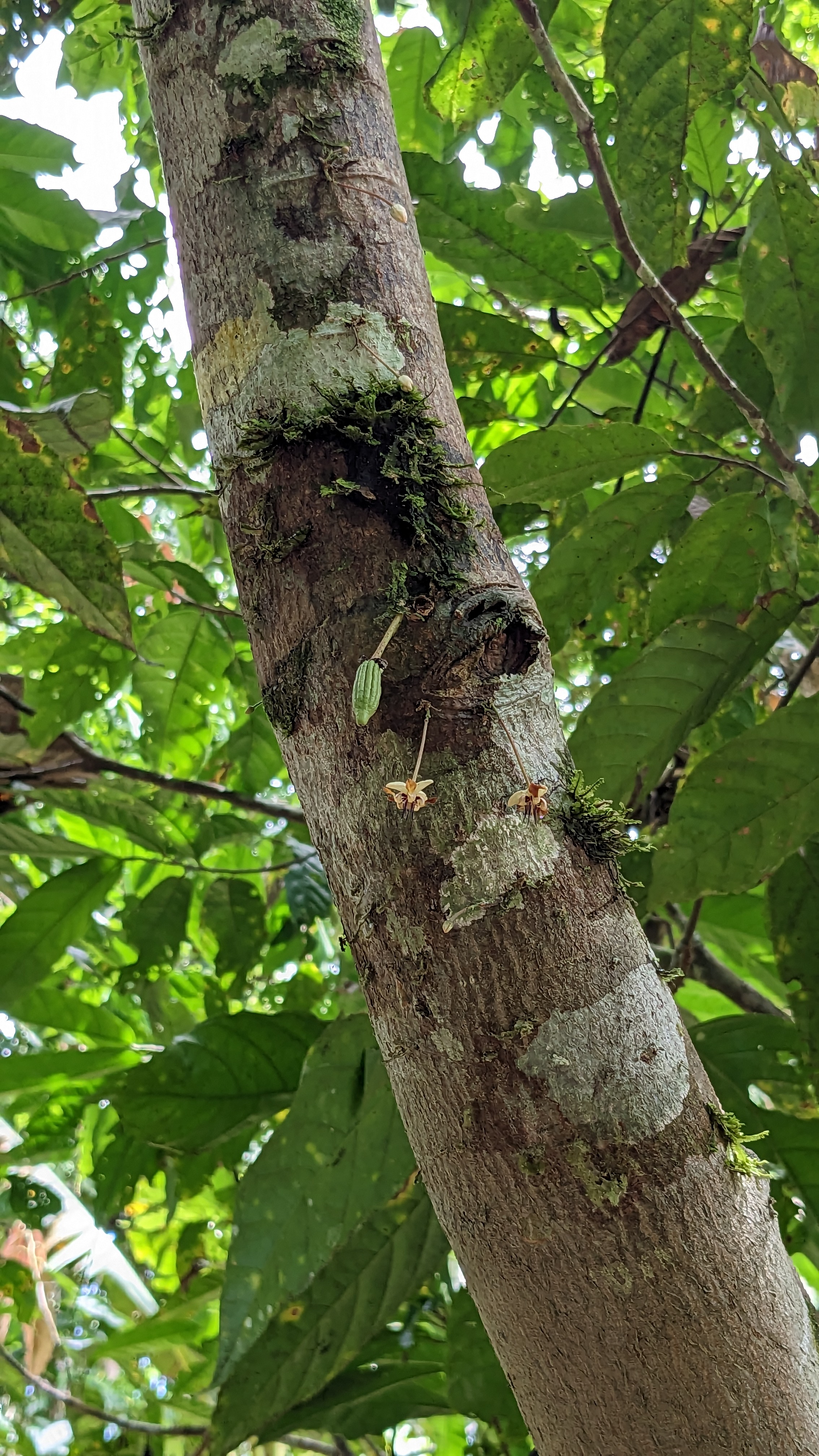
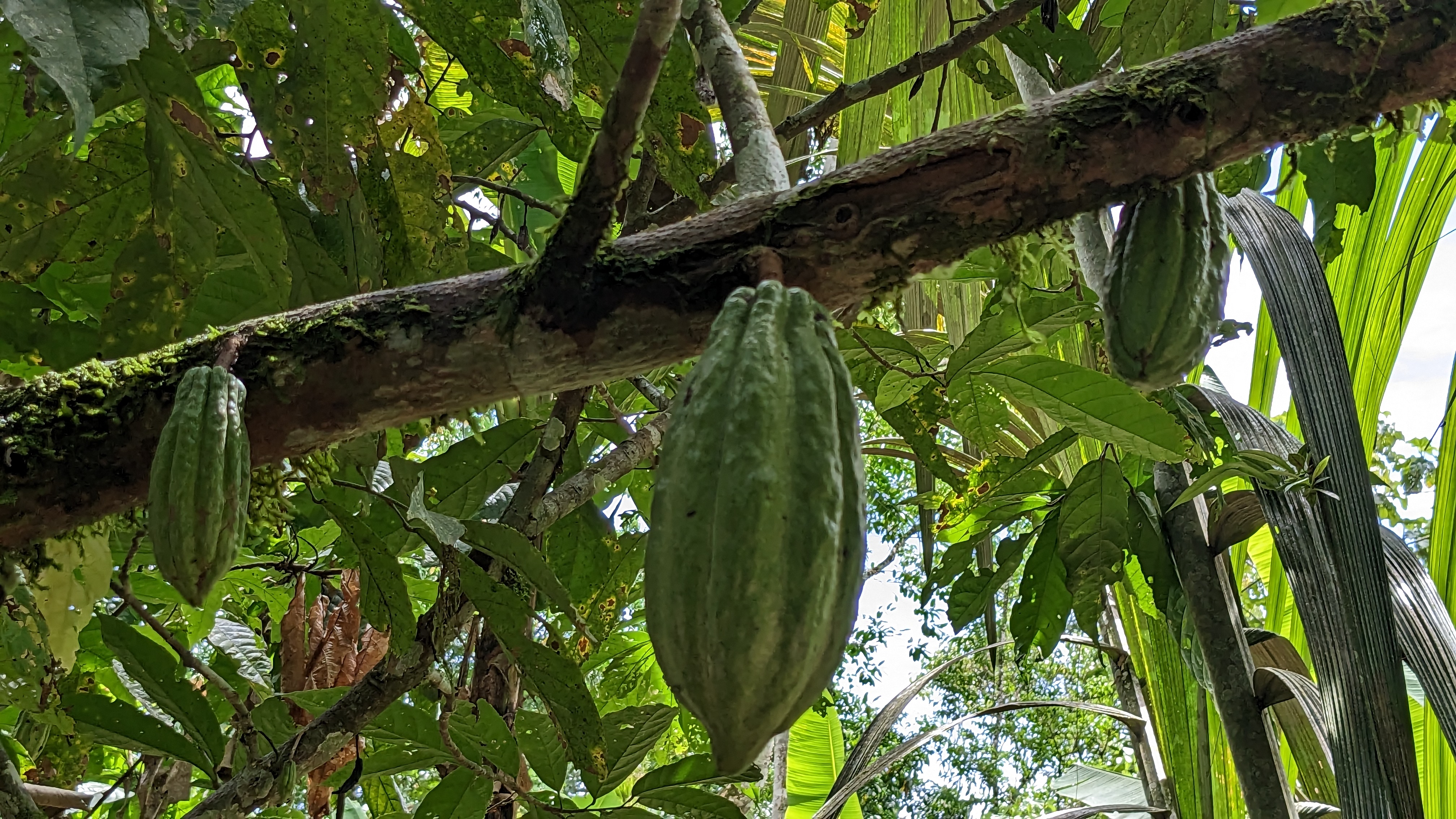
When you break open a ripe cacao fruit (a yellowy orange in color) you find cacao beans wrapped in a wet white mucous. We observed a couple kids with opened cacao fruits slowly plucking them up and sucking them one at a time. When they would finish with one bean, they would put it on a drying mat. We got a chance to open up one of the fruits ourselves and taste the mucous they are covered in, and it's a rather pleasant sweet and sour taste.

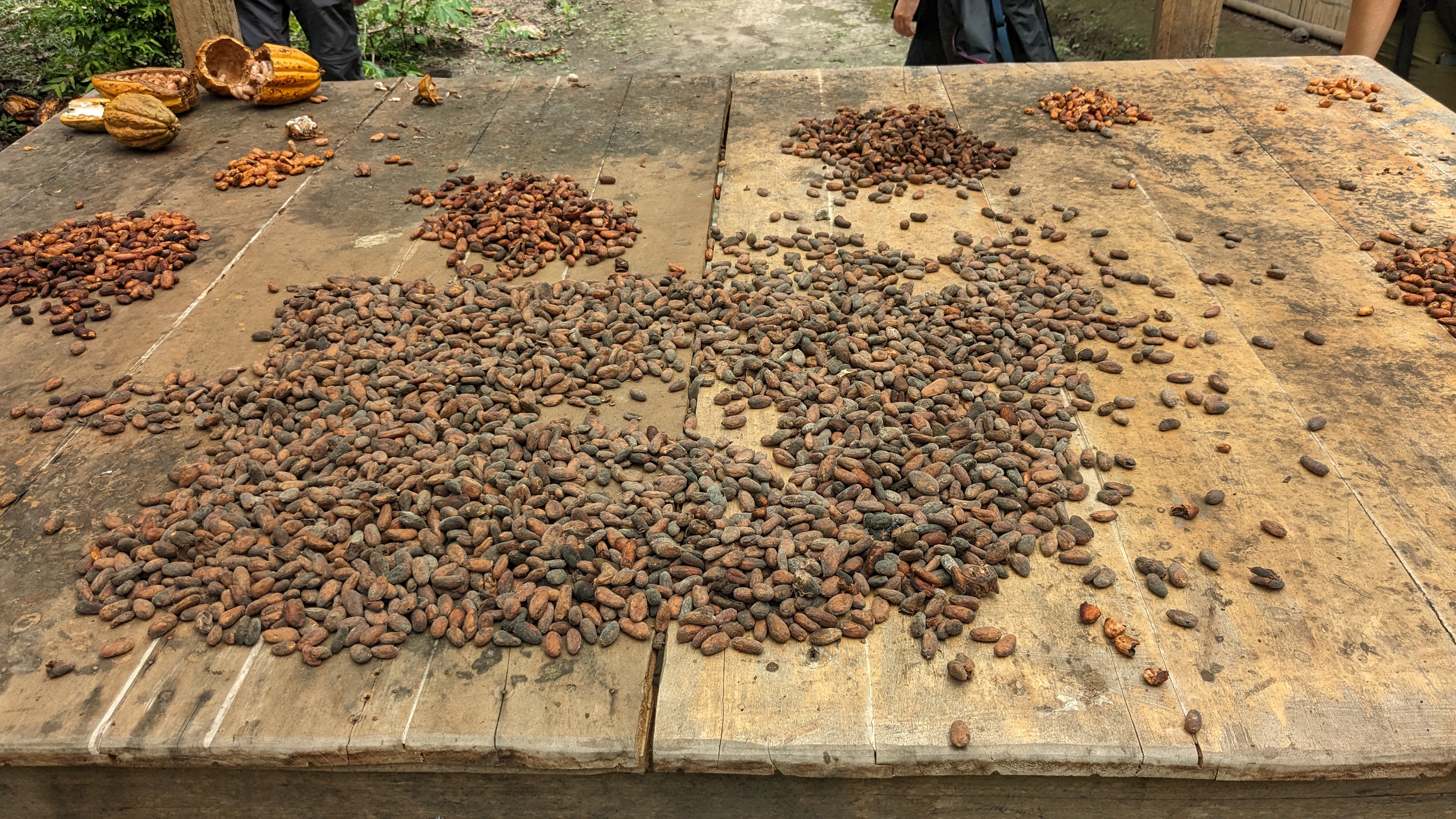
After the beans have been dried for several days, they are then baked. Our hosts did this in a thick pot over a fire, stirring the beans to bake them evenly. After a short time being baked, next step peeling off the thin outer skin of the baked beans.
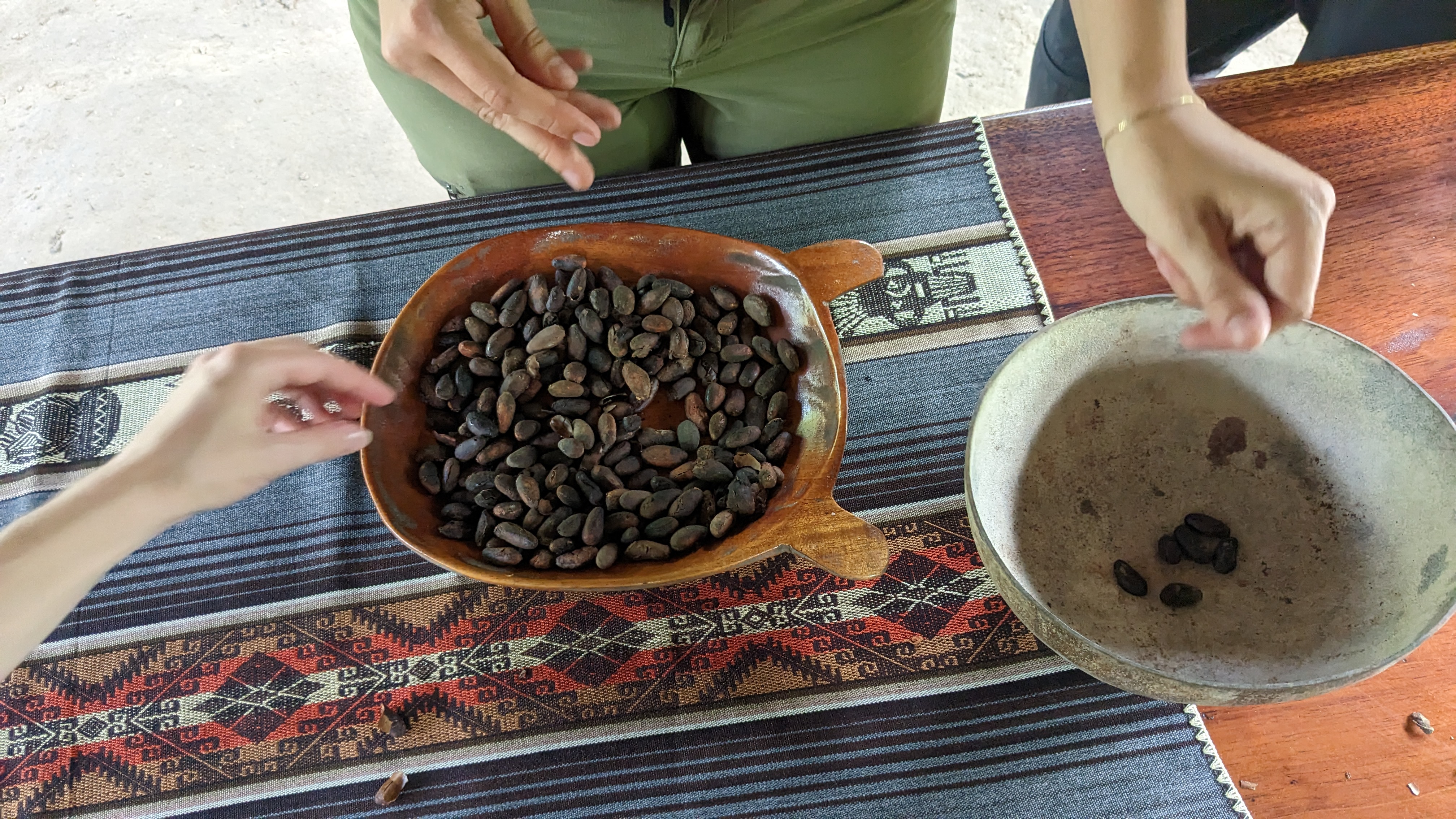
After the skins have been removed, the beans are ground into a very course powder. Once in a powder, it is put back into a cooking pot over the fire and mixed with water. The only addition we made to ours was a handful of cinnamon leaves. According to our hosts, they eyeball how much water to add based on how thick the chocolate is and how thick they want the end product to be. In our case, we were aiming for a thick spreadable chocolate.
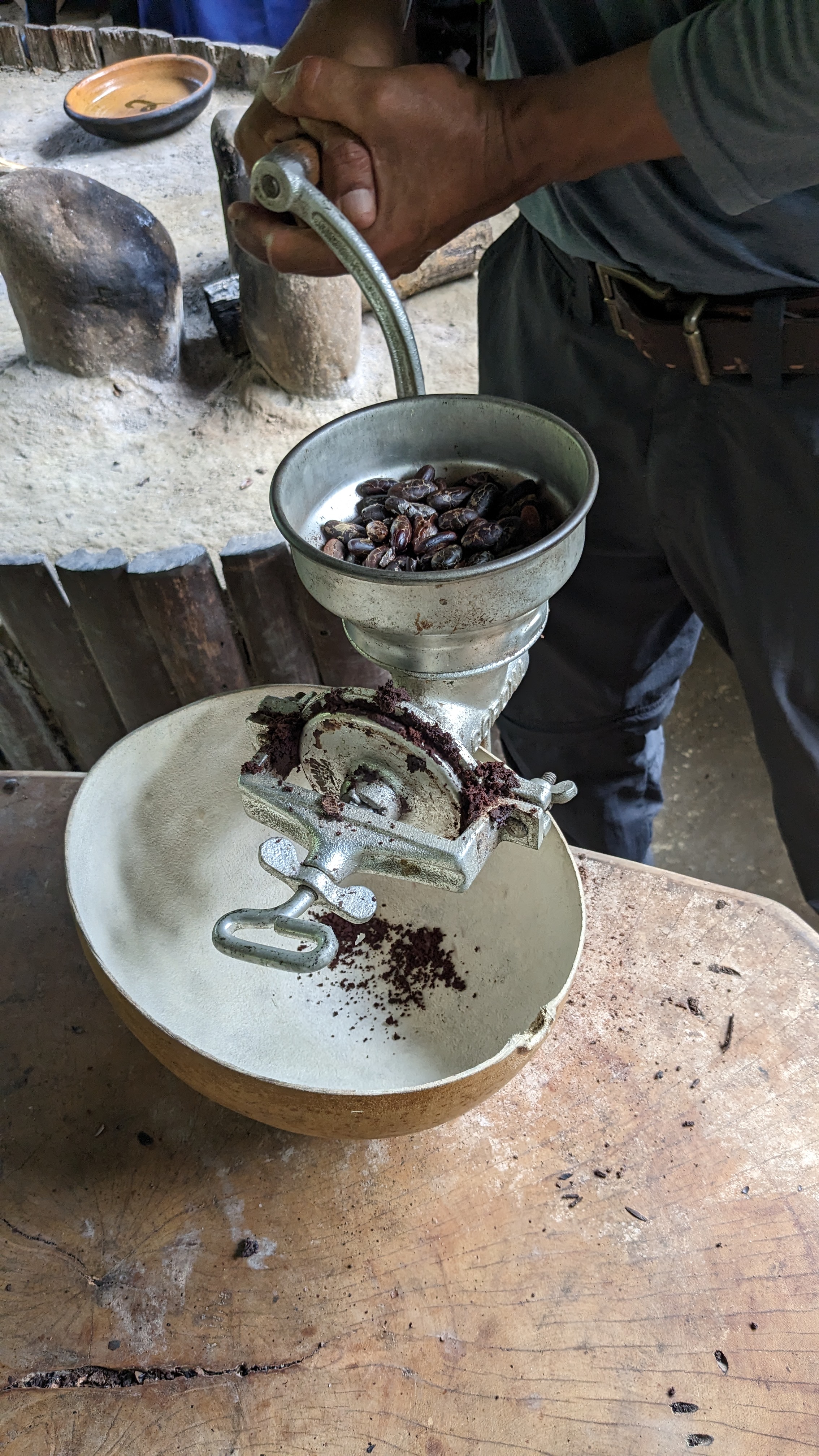
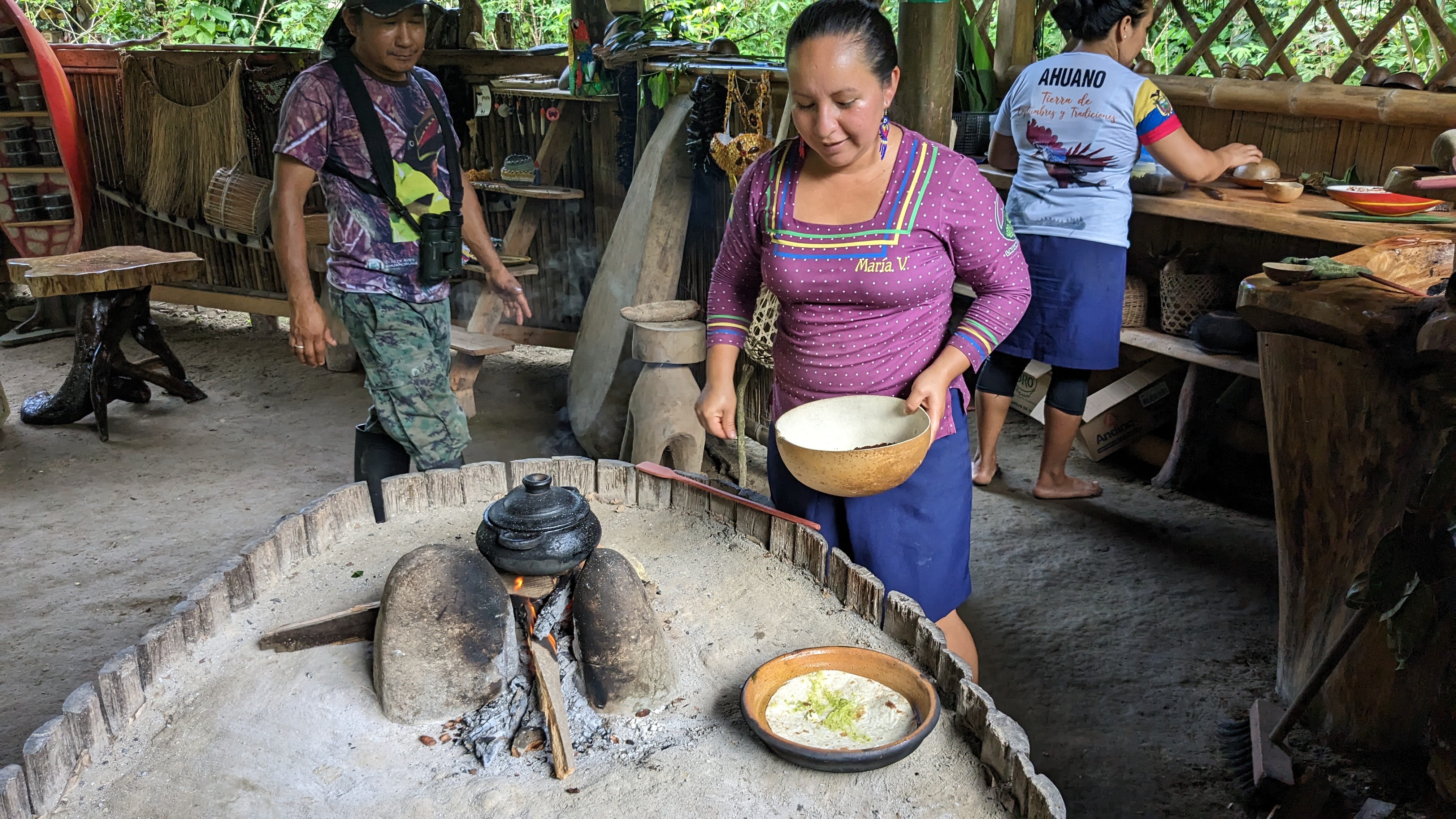
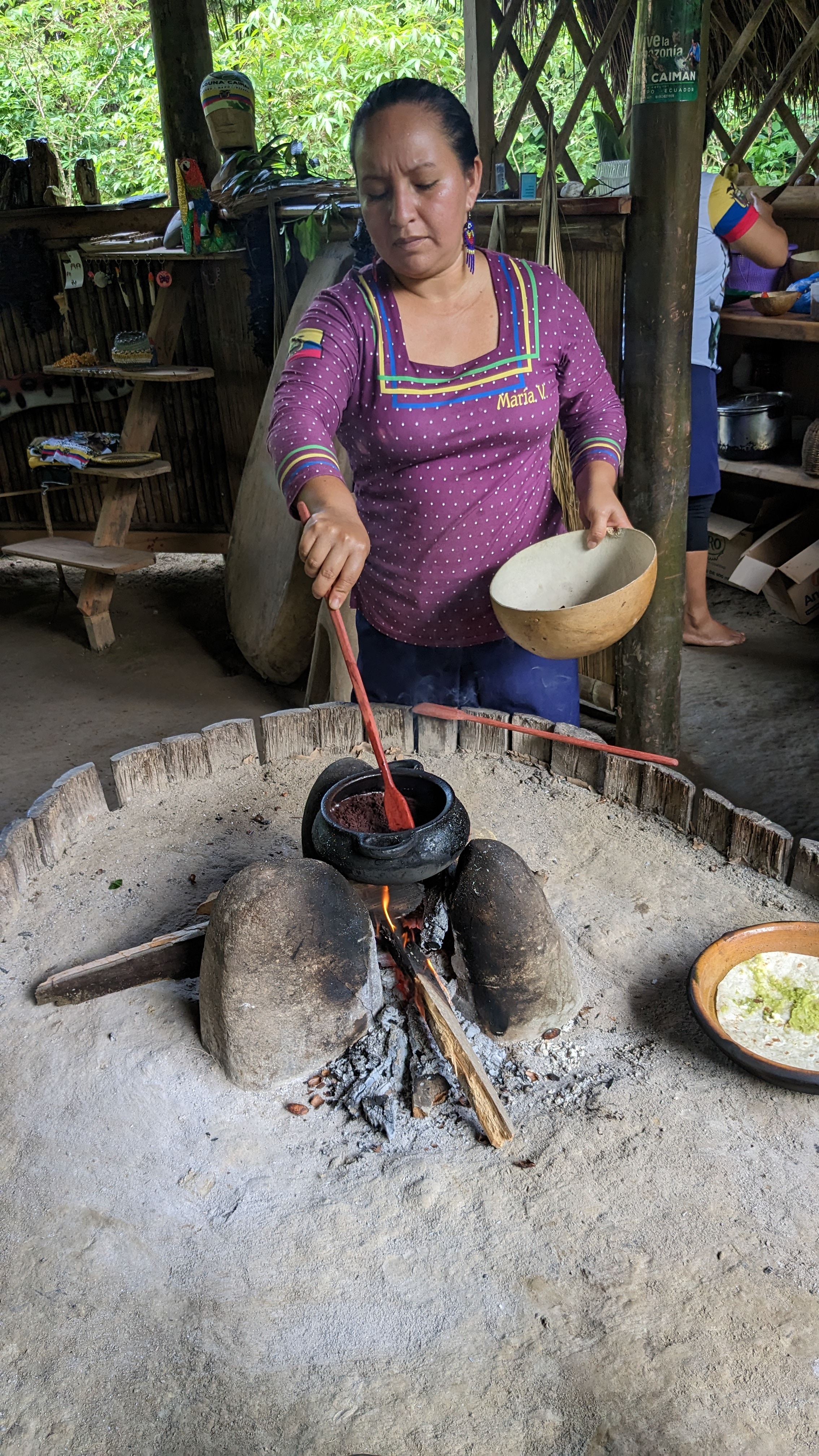
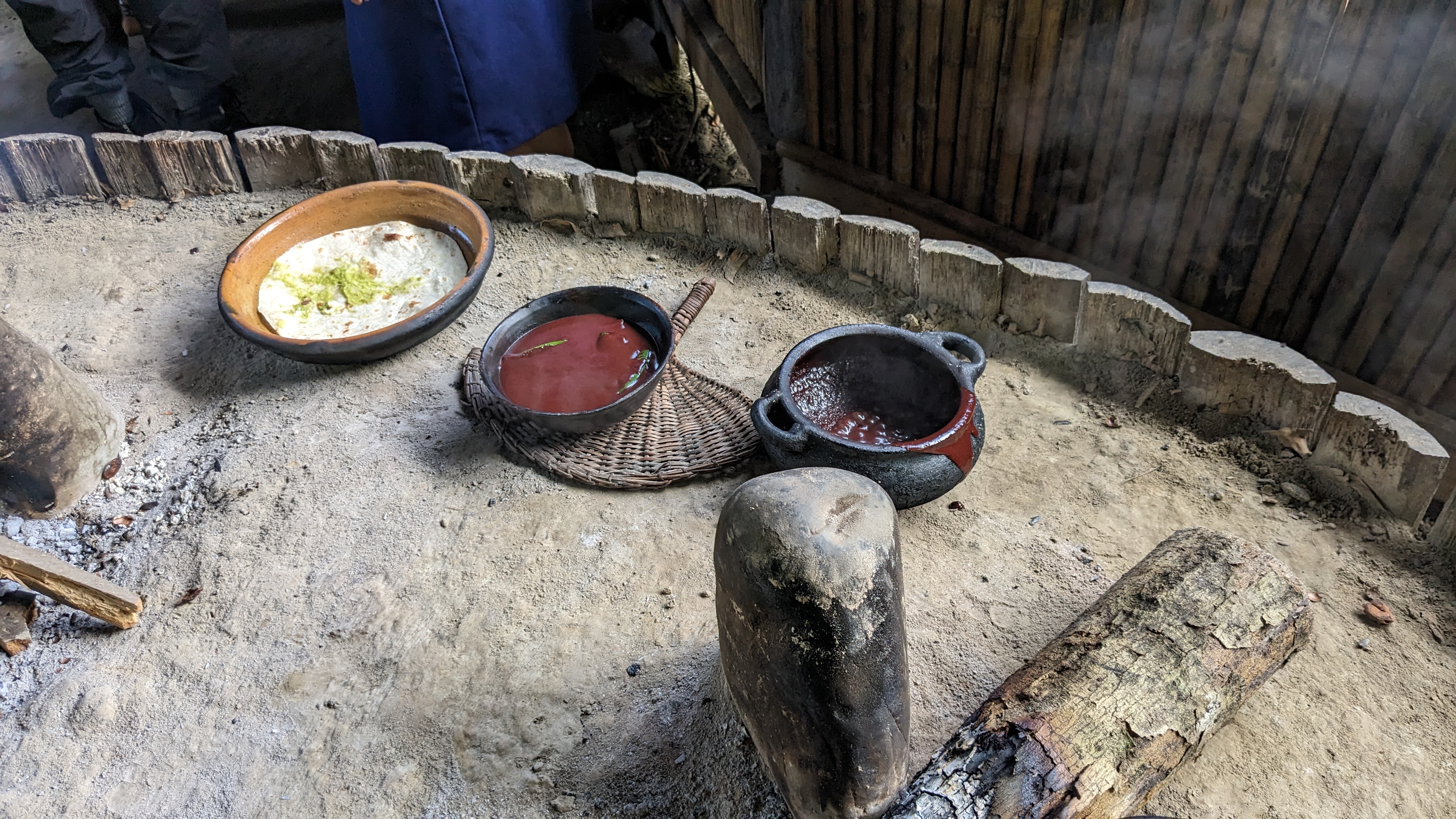
The final product, we drizzled over some sliced fruit, and it was easily the most delicious chocolate drizzle I have ever tasted. Even after the fruit was gone, we were wiping up chocolate with our fingers. We marveled at how the final product barely had any bitterness at all. We sampled the raw cacao at several stages, before baking, after baking, and after being ground into a course powder. And while the powder form was noticeably less bitter, the other forms of raw cacao were definitely as bitter as I might've expected from past experience with "dark chocolate" that has not seen the addition of much milk or sugar. And yet after the process of adding water, bringing it to a boil, and infusing with cinnamon leaves, it is amazingly sweet and rich in flavor. We marveled also in the knowledge that this is the freshest chocolate it is possible to eat. We prepared and cooked cacao beans that were harvested and dried just days before our arrival from the surrounding trees.
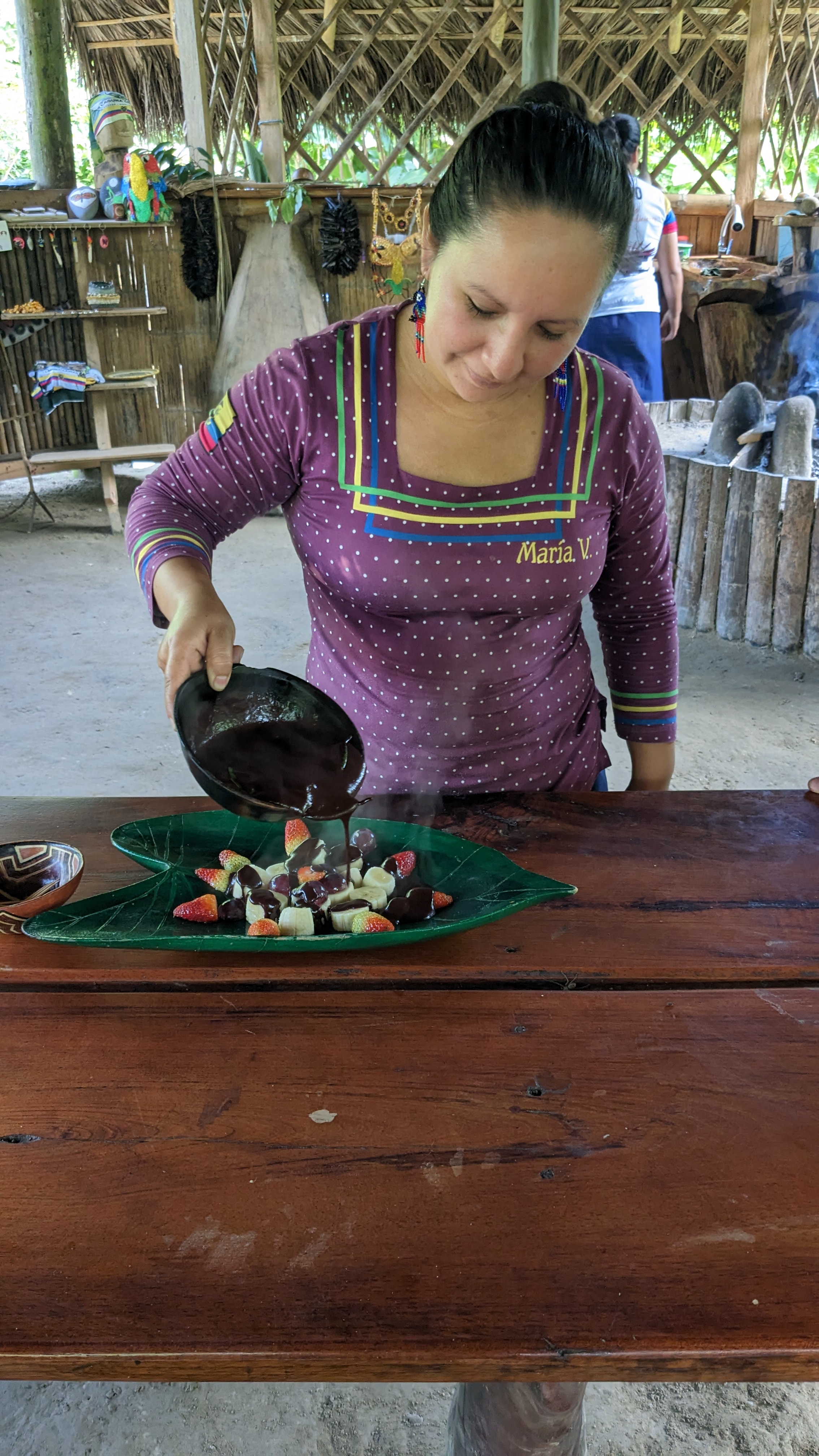
About Us
Jordi works remote full time and Anthea is studying remote full time for data science. We are taking advantage of our current work and study flexibility to explore the world 🌆 🏞 🏕 🏖 🎒 🐌 🐌
